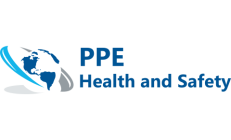
Since COVID 19 emerged, it has caused history-making changes across industries. With the rising sanitization needs, disinfectant sprays and various personal protective equipment or PPE products are still scarce. Despite the emergence of new brands in the cleaning products market, it’s not nearly enough to compensate for the deficit.
How to find best coronavirus disinfectant spray
With demands burgeoning every day, business expansion and transformation opportunities are abundant. Producers offer different types of disinfectants in gel, liquid, and aerosol forms. Hospitals, clinics, businesses, and households have the highest purchasing power in the market. With the shortage of disinfectant sprays and products, there’s hardly a convenient way to purchase these items. Amid the scarcity of disinfecting agents, struggling businesses in the industry cannot adequately meet demands. As nations slowly ease into reopening their borders, safety concerns regarding an upsurge in COVID cases remain ubiquitous. Using a trusted PPE directory might be the smartest way to find a source for quality disinfecting and cleaning supplies today.
Using disinfectant sprays to fight COVID 19
If someone who has COVID 19 respiratory infection coughs, sneezes, or talks, coronavirus-causing droplets can contaminate surfaces. This mode is one of the fastest ways the virus spreads. Cleaning these surfaces with germs-fighting antibacterial soap and disinfecting agents can lower the risk of transmission, according to the CDC. For this, it’s imperative to use powerful disinfecting agents or sprays that have the required chemical compound to destabilize the pathogens. Health officials recommend considering factors such as contact time, surface type, microorganisms targeted, chemical concentration, and compatibility when choosing disinfectant sprays. Also, it’s crucial to follow the directions specified on the label correctly.
How to use disinfectant spray correctly
One crucial protocol to remember when disinfecting is to clean the target surface. The purpose of this step is to reduce the viral load on targeted contaminated surfaces. Also, it eliminates environmental elements or organic matter that might interact with the chemical and impede efficacy. When cleaning, consider using soap or effective neutral detergent and water to detail the surface. If possible, use a mild scrubber or soft-bristle brush to remove debris, dirt, and stuck on articles.
Using disinfectant spray on unclean surfaces is pointless because certain organic materials and substances can destabilize germicidal agents. Worst, some are potent enough to inactivate the proprietary germicides and render the disinfectant ineffective. For surface disinfection to be effective, it is also crucial to choose a product that has the right concentration of germicides. Where appropriate, it is safe to apply a recommended chemical disinfectant, for example, alcohol or chlorine-based products. Doing this will neutralize any lingering microbes before using a disinfecting spray.
Disinfectant spray contact time
Using disinfectant sprays as a manufacturer’s directions dictate, is paramount. For example, surface contact time for these products often vary, which can make it less effective when used. Furthermore, failing to use the correct amount or volume of disinfectant can also impede the activation process. Another fundamental rule is to allow the disinfectant to soak on surfaces for the prescribed contact time. Some disinfecting agents work better on wet surfaces.
COVID 19 disinfecting zones and personal safety
Is zoning relevant when spraying disinfectant? Of course, because neutralizing contaminants, especially a microorganism as adaptive as COVID 19 respiratory virus, is not viable without direct contact. That said, disinfectant sprays are more appropriate for near field contact.
While spraying disinfectants, individuals should wear PPE to avoid direct contact with possibly toxic substances. For commercial applications, health safety guidelines recommend using the appropriate medical masks, gloves, eye protection gear, and gown. It will prevent skin contact with hazardous chemicals, organic materials, and other risk factors.
Ventilation for COVID 19 disinfection
When using disinfecting sprays or products indoors, remember to do so in a properly ventilated area. To improve ventilation in closed spaces, it helps open windows and doors. Doing this will help release any deoxygenated air for optimal breathing. Also, avoid blending or mixing chemicals because it can cause respiratory distress and irritation.
Despite the incredible developments in PPE markets today, there is still a struggle to get some personal protective equipment. How will businesses and consumers get these essential items if not for PPE directories? After all, it’s convenient because a top PPE directory can connect clients directly to wholesale suppliers and manufacturers.
